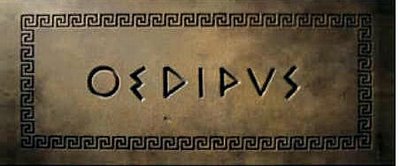
For its 45th anniversary issue (November/December 2006),
The Columbia Journalism Review has published
Into the Abyss - Reporting Iraq 2003-2006: An Oral History.
In its introduction, the CJR says, "we interviewed [
Wall Street Journal reporter Farnaz] Fassihi and forty-six other journalists who have covered the war in Iraq. Out of their anecdotes and insights we constructed an oral history — the first of its kind. These people are covering the most significant story of our time and doing it under circumstances that nearly defy belief. They have lived and studied 'the situation' closely, some of them for four years or more. This is their story."
In their comments, reporters speak candidly about the cross-cultural aspects of covering the war. Excerpts:
Borzou Daragahi, Los Angeles Times
I know how religious the people in Iraq are, how traditional they are with regard to gender relations and stuff like that. I would see certain stuff and I would just cringe and want to say [to U.S. soldiers], “You guys are really, really making a bad name for yourself here by storming into this guy’s house with your shoes on. This guy’s done nothing and yet you’re going to make an enemy out of him because he’s gonna talk about you guys for the rest of his life, and that day when they came storming into my house with their shoes on — nobody walks into my house with their shoes on!"
Rajiv Chandrasekaran, The Washington Post
It became clear that you didn’t want to go to some of these places after dark. Even with that, you still got around pretty well through the summer of 2003 and into the fall of 2003. After, it became evident that a lot of contractors were driving around in Jeep Cherokees that looked like ours, I took one and then the second of four SUVs to Sadr City and did the Baghdad equivalent of Pimp My Ride. For sixty bucks, I had it sandblasted and had it painted to look like an Iraqi taxi cab. The really nice paint job on this $90,000 vehicle was stripped off and it was made to look like a ghetto mobile, like a Shiite ghetto mobile from Sadr City. . . .
Elizabeth Palmer, CBS
I've been struck by how essentially humane a lot of the soldiers are, with a very strong sense of right and wrong, which I think comes with growing up in America. And how ill-equipped they were to apply that to a situation like Iraq, without enough historical or geographical or cultural knowledge to actually — unless they were under the command of a very gifted officer, and there are some who are extremely well-equipped, but a lot of them are not — to apply that sort of fairness to Iraqi society. I feel that a huge majority of them are good men trapped in an impossible situation and have not really understood where they are historically, as well as culturally and physically. I think they’re hostages of a terrible situation as well; it’s given me enormous sympathy for them, and certainly a new appreciation for how ill-prepared they were for the mission, at least in the early days.

























 When computers were first being developed, you have to think no one imagined that someone would figure out this particular use for them.
When computers were first being developed, you have to think no one imagined that someone would figure out this particular use for them.























 One can also personalize Intute with
One can also personalize Intute with 




 ms.dsk is reading
ms.dsk is reading  Rob Koelling is reading
Rob Koelling is reading  S. Renee Dechert is reading
S. Renee Dechert is reading  Mary Ellen Ibarra-Robinson is reading
Mary Ellen Ibarra-Robinson is reading  Bill Hoagland is reading
Bill Hoagland is reading  Jennifer Sheridan is reading
Jennifer Sheridan is reading  Robyn Glasscock is reading poetry by
Robyn Glasscock is reading poetry by  Susan Watkins is reading
Susan Watkins is reading